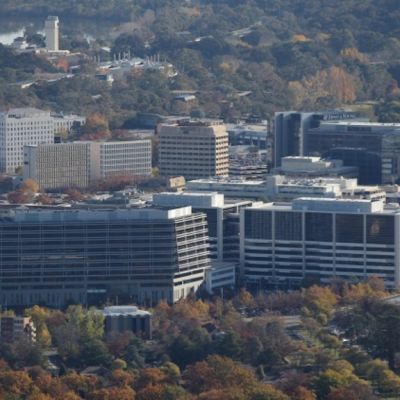Canberra's office market set to improve, according to Knight Frank report
Canberra’s office market is set to improve over the next couple of years despite an expected lag during the federal and ACT elections, according to a new report from leading property consultancy Knight Frank.
The capital’s office vacancy rate over the past 12 months has slowed to its lowest level since 2000, with 18,197 square metres of extra stock.
Knight Frank’s ACT head of office leasing, Nicola Cooper, said Canberra’s vacancy rate was set to continue falling over the next two years with more tenants expected to lease existing commercial space after the election period.
She said a likely stall in major office developments hitting the market in the near future would also contribute to the decline.
“Leasing activity is expected to moderately stall over the short term as tenants hold back on commitments until respective governments are confirmed,” she said.
“With more sustained levels of employment growth anticipated during 2016, underpinned by the private sector, it is anticipated that leasing activity will gain further momentum thereafter.”
Ms Cooper said leasing enquiries had been solid in recent months but remained largely focused on Civic.
She said the next major release of office space, the new 30,707-square-metre Tuggeranong Office Park, wasn’t expected to hit the market until late 2017.
“Looking ahead, office supply in Canberra is expected to remain benign over the next two years, with additions in the interim resulting from the redevelopment of Tuggeranong Office Park and refurbishments from tenant relocations,” Ms Cooper said.
The federal election in particular would help re-charge the commercial market, regardless of the result, due to administrative or machinery of government changes potentially shifting or co-locating departments among the city’s office buildings.
She said most of Canberra’s sub-lease space was filling up, including the finalisation of plans to move more public servants into the Nishi Building in Acton.
In February, the Property Council of Australia ACT linked the small drop in vacant space to the withdrawal of office stock as disused property took on a new lease on life.
Similarly, Ms Cooper said several dated ACT government buildings would be eventually knocked down to make way for newly-announced projects, such as a 20,000-square-metre office complex planned on the London Circuit car park next to the Legislative Assembly building in Civic and the redevelopment of the Dickson Motor Vehicle Registry site.
According to Knight Frank, Canberra’s primary market vacancy rate is at 6.9 per cent, 60 per cent of which is located at the Canberra International Airport precinct. The airport has a vacancy rate of 42.6 per cent. Tenant demand for secondary office space is weaker, with a vacancy rate of 18.3 per cent.
Ms Cooper said this was largely due to “prohibitive policies” around re-using former office space.
“If changes are made to the Lease Variation Charge which are more supportive of adaptive re-use opportunities, an accelerated fall in the vacancy rate will occur as stock is withdrawn,” she said.
Meanwhile, commercial rent was expected to rise gradually by about 2.5 per cent for primary office space and 1 per cent for secondary office space.
Knight Frank associate director of institutional sales, Nic Purdue said a growing number of buyers priced out of the Sydney and Melbourne markets had turned their attention to Canberra thanks to the higher yields and secure long-term government leases available in the capital.
“This is evident by recent offshore interest in Canberra, highlighted by the December 2015 sale of the Louisa Lawson building at Greenway, which was acquired by FG Asset Management for $224.5 million,” he said.
“With increased interest coupled with a number of assets currently for sale, investment volumes are expected to remain buoyed during 2016.”
We recommend
States
Capital Cities
Capital Cities - Rentals
Popular Areas
Allhomes
More








